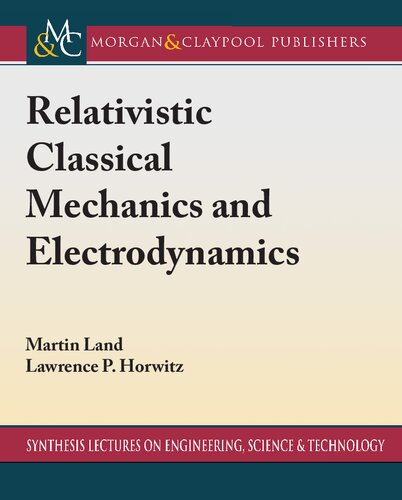

Most ebook files are in PDF format, so you can easily read them using various software such as Foxit Reader or directly on the Google Chrome browser.
Some ebook files are released by publishers in other formats such as .awz, .mobi, .epub, .fb2, etc. You may need to install specific software to read these formats on mobile/PC, such as Calibre.
Please read the tutorial at this link: https://ebookbell.com/faq
We offer FREE conversion to the popular formats you request; however, this may take some time. Therefore, right after payment, please email us, and we will try to provide the service as quickly as possible.
For some exceptional file formats or broken links (if any), please refrain from opening any disputes. Instead, email us first, and we will try to assist within a maximum of 6 hours.
EbookBell Team

0.0
0 reviewsThis book presents classical relativistic mechanics and electrodynamics in the Feynman-Stueckelberg event-oriented framework formalized by Horwitz and Piron.
The full apparatus of classical analytical mechanics is generalized to relativistic form by replacing Galilean covariance with manifest Lorentz covariance and introducing a coordinate-independent parameter to play the role of Newton's universal and monotonically advancing time. Fundamental physics is described by the -evolution of a system point through an unconstrained 8D phase space, with mass a dynamical quantity conserved under particular interactions. Classical gauge invariance leads to an electrodynamics derived from five -dependent potentials described by 5D pre-Maxwell field equations. Events trace out worldlines as advances monotonically, inducing pre-Maxwell fields by their motions, and moving under the influence of these fields. The dynamics are governed canonically by a scalar Hamiltonian that generates evolution of a 4D block universe defined at to an infinitesimally close 4D block universe defined at +. This electrodynamics, and its extension to curved space and non-Abelian gauge symmetry, is well-posed and integrable, providing a clear resolution to grandfather paradoxes. Examples include classical Coulomb scattering, electrostatics, plane waves, radiation from a simple antenna, classical pair production, classical CPT, and dynamical solutions in weak field gravitation. This classical framework will be of interest to workers in quantum theory and general relativity, as well as those interested in the classical foundations of gauge theory.